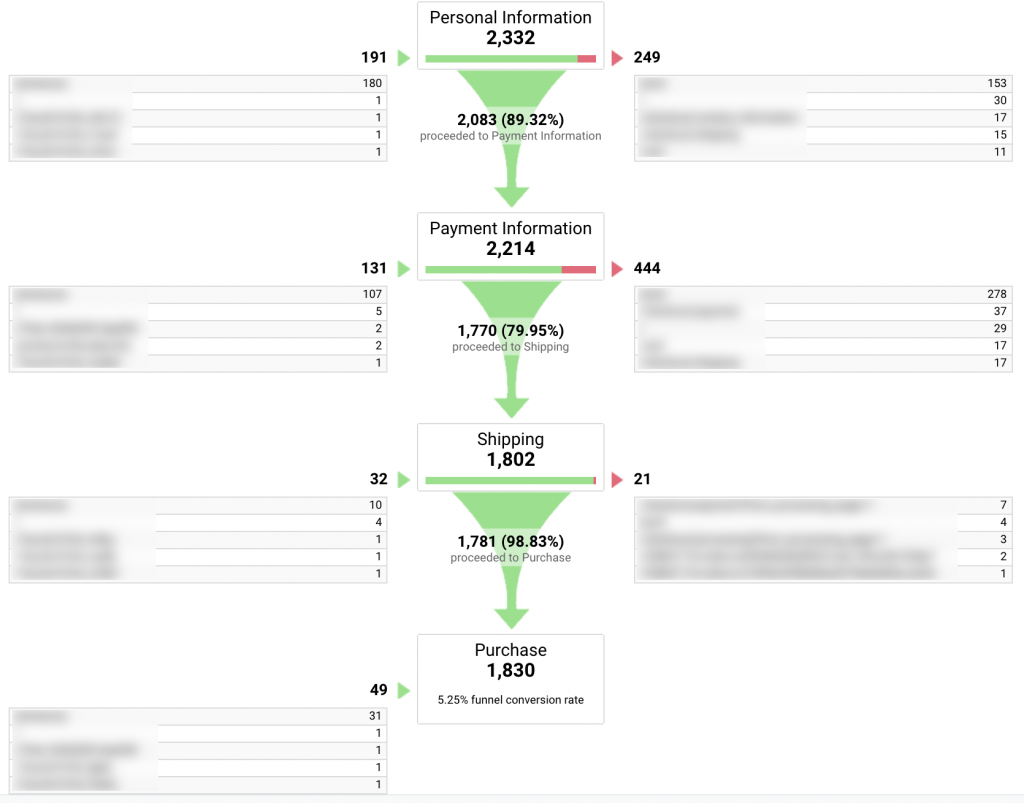What Data Is Google Analytics Goals Unable to Track: A Full Overview
What Data Is Google Analytics Goals Unable to Track: A Full Overview
Blog Article
Introducing the Blind Attractions: Understanding What Google Analytics Goals Can not Determine
In the world of digital analytics, Google Analytics stands as a powerful device for tracking and evaluating on-line individual interactions. Recognizing what Google Analytics goals can not measure is crucial for obtaining a detailed view of customer habits and engagement.
Individual Behavior on External Operatings Systems
Understanding just how individuals interact on exterior platforms is vital for optimizing on-line approaches. Outside platforms, such as social media sites networks, recommendation websites, and on the internet forums, play a significant function in driving traffic to a firm's website. By assessing individual actions on these platforms, businesses can get important insights into the effectiveness of their advertising and marketing initiatives and the preferences of their target audience.
One key facet of individual habits on outside systems is the reference source. By tracking where the individuals are originating from, businesses can determine which platforms are driving one of the most traffic to their website. This info can help firms designate their resources better, focusing on the systems that yield the very best results.

Offline Interactions and conversions
Evaluating user behavior on external platforms gives valuable understandings right into on-line approaches; nonetheless, considering offline conversions and communications is just as vital for a detailed understanding of a business's general performance. While Google Analytics stands out at tracking online interactions, it falls brief in recording the full customer trip that commonly consists of offline touchpoints. Offline conversions, such as in-store acquisitions or phone inquiries, play a significant role in lots of organizations' success. Disregarding these communications can result in a distorted view of the efficiency of advertising projects and general company performance.

Attribution Beyond Last Click
When diving right into the realm of digital advertising analytics, it comes to be important to look beyond the solitary touchpoint of the last click for an extra thorough understanding of attribution. While Google Analytics provides important insights right into customer actions, relying entirely on last-click acknowledgment can be restricting - what data is google analytics goals unable to track. Acknowledgment designs that surpass the last click supply a more nuanced view of the customer journey, thinking about all the touchpoints that lead to a conversion
Attribution past the last click permits online marketers to assign debt to numerous communications along the conversion course, providing a clearer image of the performance of various advertising and marketing networks. By checking out multi-touch attribution designs such as linear, time degeneration, or position-based acknowledgment, organizations can much better assign their marketing budgets and optimize their approaches for maximum impact.
Understanding the impact of each touchpoint in the conversion procedure is vital for making notified decisions and maximizing ROI. By accepting attribution past the last click, companies can gain much deeper insights right into customer actions and tailor their advertising and marketing efforts better.
Cross-Device and Cross-Browser Tracking

Similarly, cross-browser tracking matches cross-device monitoring by recording user behavior as they change in between various internet internet browsers. Recognizing how users communicate with web sites on numerous internet browsers can aid marketing experts optimize their on the internet experiences to make sure uniformity and capability throughout various systems.
Qualitative Information and User Intent
Comprehending individual intent with qualitative information evaluation is essential for establishing targeted electronic marketing techniques that resonate with the requirements and preferences of the target audience. Qualitative data offers insights into the 'why' behind user actions, shedding light on inspirations, feelings, and choices that quantitative data alone can not record. By assessing customer comments, comments, and interactions, marketers can reveal beneficial info regarding user intent, permitting them page to customize their messaging, material, and offerings to better straighten with what their target market is seeking.
Qualitative information additionally assists in understanding the context in which users involve with a web site or application. This contextual understanding allows marketing professionals to produce even more relevant and individualized experiences, ultimately driving greater interaction and conversion rates. By diving into individual intent through qualitative information analysis, organizations can acquire a much deeper understanding of their target audience, leading to extra efficient advertising and marketing approaches that meet users' expectations and requirements.
Conclusion
In verdict, Google Analytics goals have constraints in gauging individual actions on external systems, offline conversions, acknowledgment beyond last click, cross-browser and cross-device tracking, and qualitative information connected to individual intent. what data is google analytics goals unable to track. It is very important for services to be mindful of these dead spots in order to supplement their information evaluation with other tools and approaches to gain a much more thorough understanding of their audience and enhance their total digital advertising methods
By analyzing individual habits on these systems, businesses can acquire useful understandings into the effectiveness of their advertising initiatives and the preferences of their target audience.
Analyzing individual habits on exterior systems provides valuable insights into online methods; nevertheless, taking into consideration offline conversions and interactions is equally crucial for a thorough understanding of a company's overall performance.In digital marketing analytics, moving beyond last-click acknowledgment to check out cross-device and cross-browser monitoring is important for getting an alternative understanding of individual communications across different platforms and devices. By analyzing user responses, remarks, and communications, online marketers can reveal useful info about customer intent, allowing them to tailor their messaging, material, and offerings to better align with what their target market is looking for.
By delving into customer intent with qualitative data analysis, organizations can obtain a much deeper understanding of their target audience, leading to much more effective marketing strategies that fulfill customers' assumptions and requirements.
Report this page